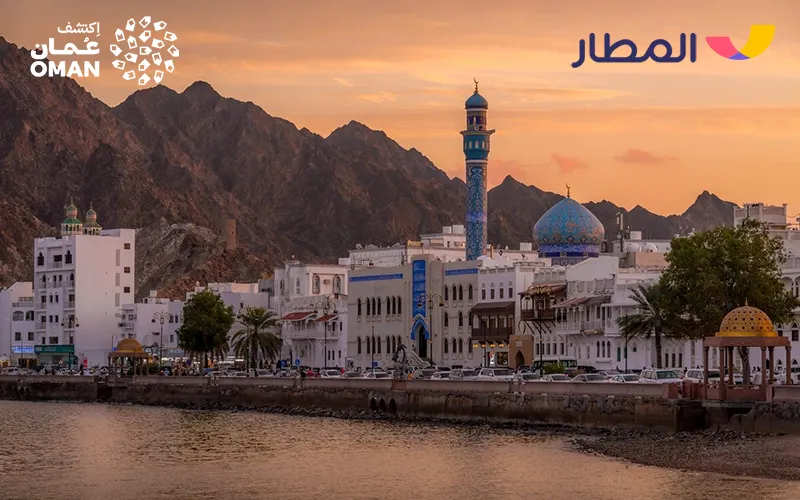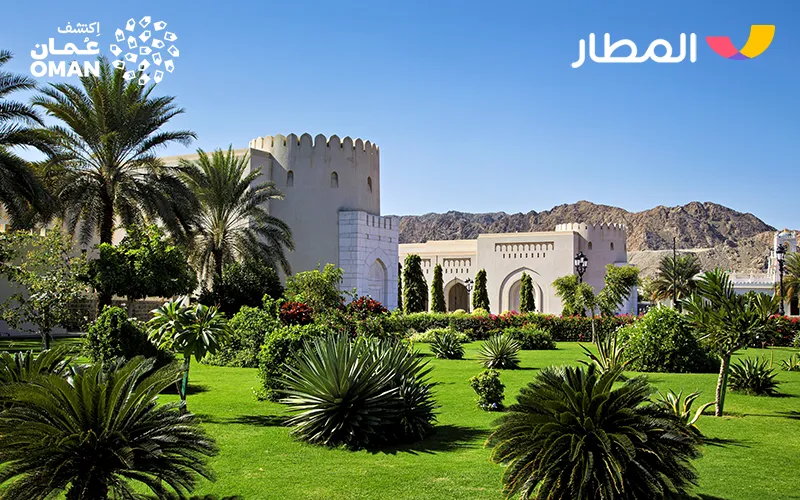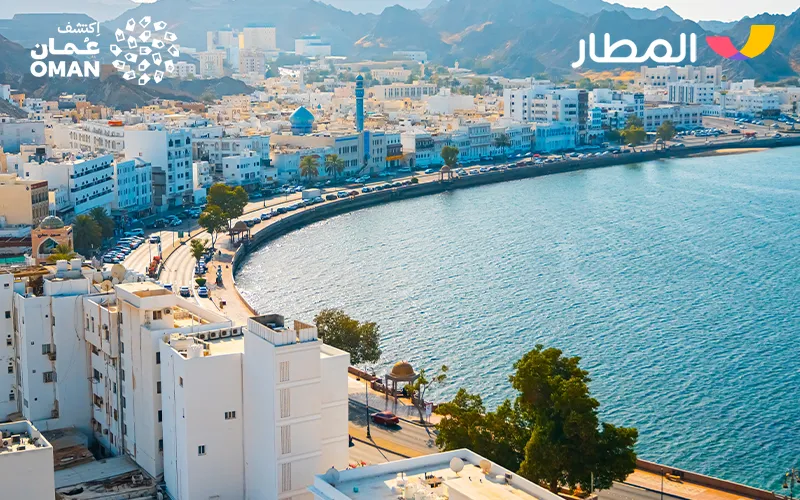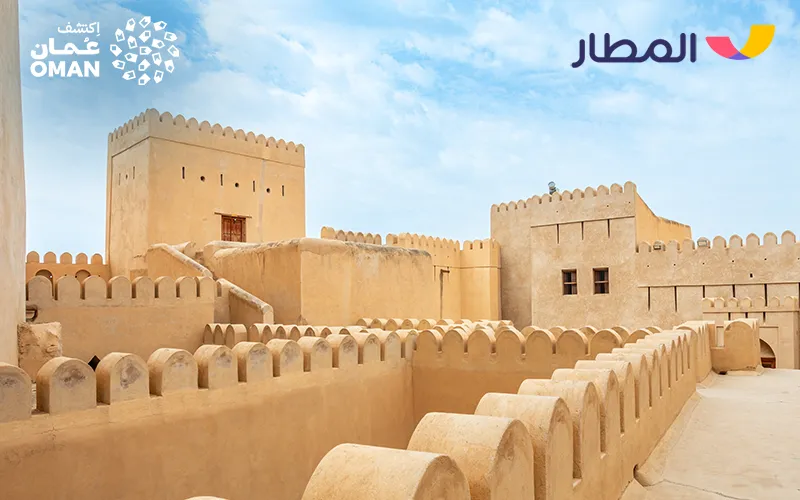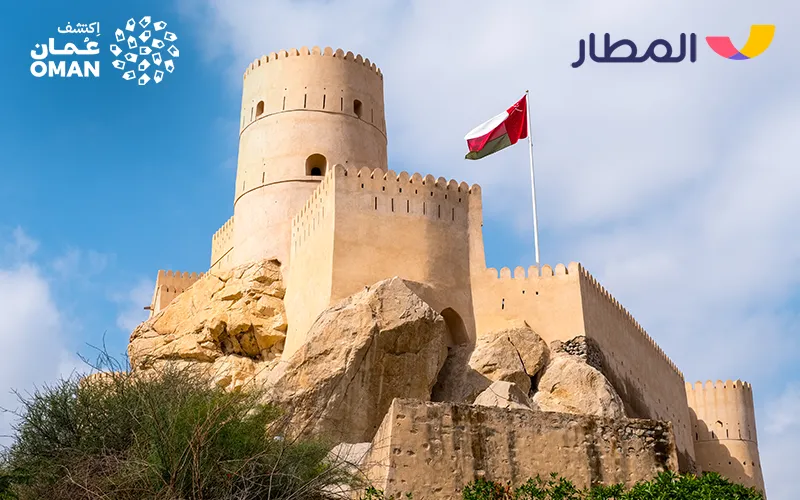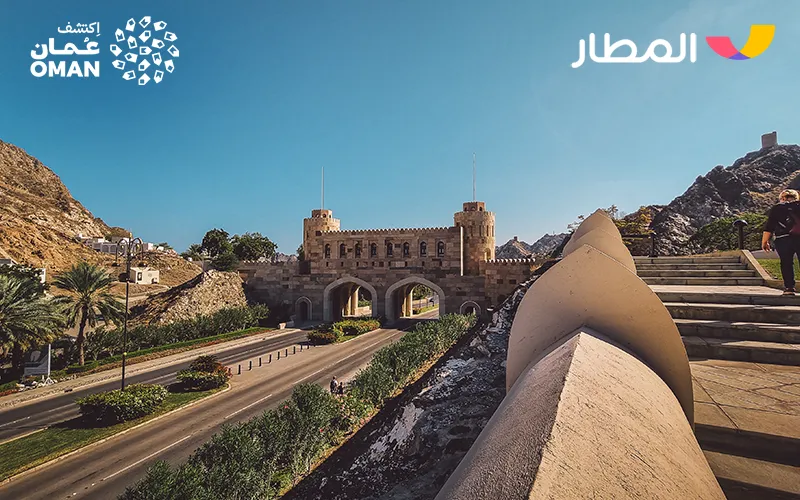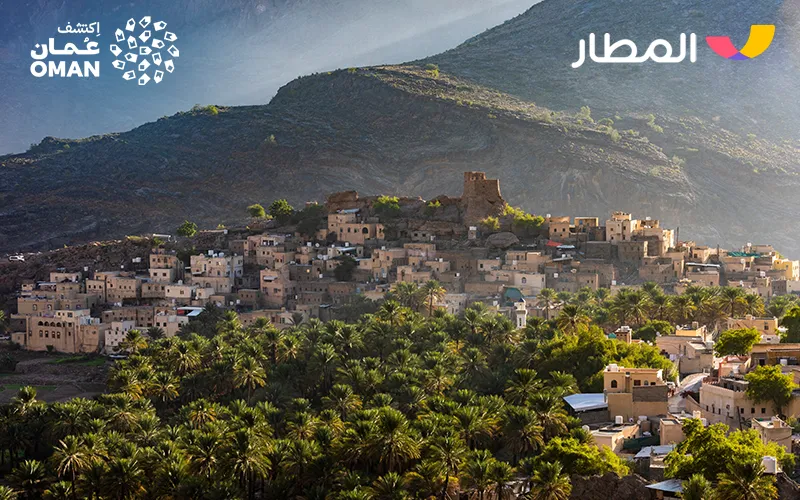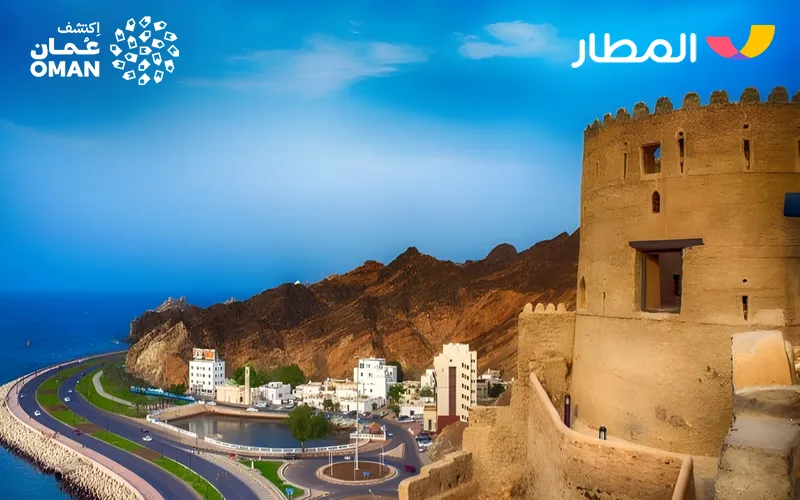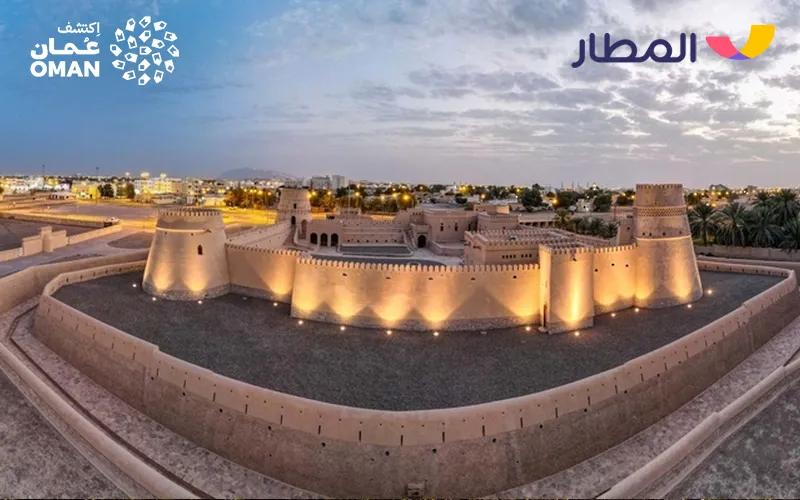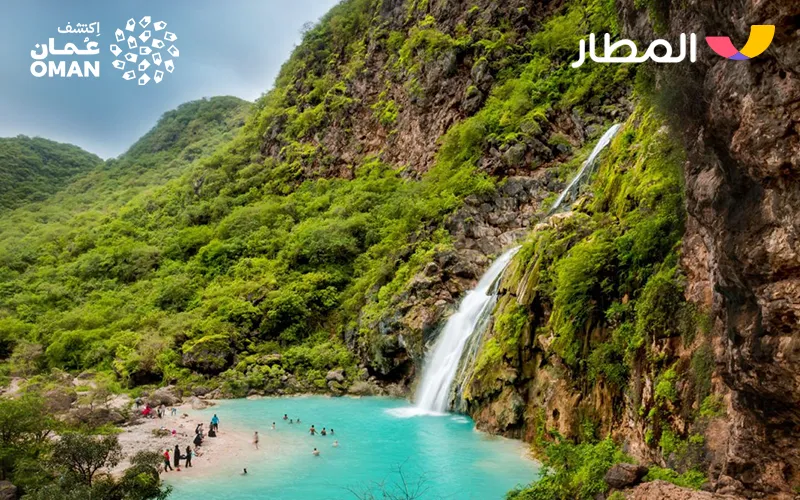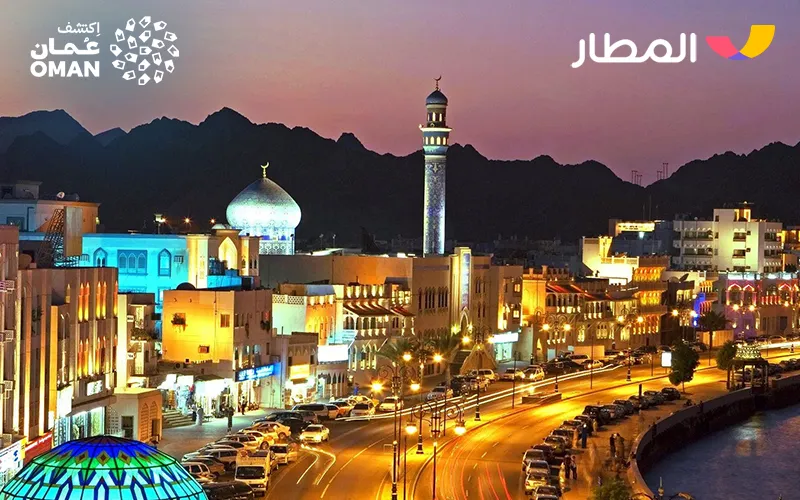Imagine stepping into a living history book!! This is what awaits you in the Sultanate of Oman, which possesses a very rich heritage filled with landmarks.
The History of Oman is full of stories about brave sailors, trade caravans crossing the deserts, and forts that have stood for centuries to tell the tale of a nation whose roots have never been severed.
In this historical tour, we will take you through the most prominent historical landmarks of the Sultanate of Oman to understand why this Gulf country has become an essential destination for heritage and history lovers in the region.
Oman: A Unique History and Exceptional Location
The Sultanate of Oman is distinguished as a crossroads of civilizations within a strategic location on the Arabian Peninsula, which has given it a unique historical legacy and made it a country rich in ancient landmarks.
Did you know that the Sultanate of Oman is the oldest Arab country continuously ruled by its sultans over the centuries?!
After the 16th century, Oman built a maritime empire that rivaled colonial powers, and its influence extended across the Indian Ocean, reaching the East African coast at Zanzibar during its peak.
This rich history has given the Sultanate of Oman a unique civilizational personality with a character that distinguishes it even from some of its neighbors.
Oman Heritage: A Tourism Treasure
Oman’s uniqueness is not limited to its history; it also lies in how it celebrates and preserves this history for visitors from around the world to enjoy.
The Sultanate recognized early on the importance of its heritage treasures, and it sought to document and protect them internationally.
Notably, in 2025, Oman achieved remarkable success by adding four historical Omani sites to the Arab Heritage List approved by the Arab League.
These sites include Nizwa Fort, Sohar Fort, Al Hamouda Mosque, and Al Shawadhna Mosque, which received this recognition in appreciation of their architectural and historical value.
Such Arab and international listings reflect Oman’s commitment to preserving its Arab-Islamic heritage and enhance its status as a cultural and tourist destination within the History of Oman.
Additionally, the government heavily invests in restoring archaeological sites, developing museums, and modernizing their exhibits.
For example, it launched a new visual identity for Bahla Fort, the first Omani site listed as a World Heritage Site (1987), to confirm its historical status and attract more visitors.
All these efforts are part of Oman’s tourism vision to integrate heritage into the modern tourist experience, making the past a living part of the visitor’s present.
Oman Landmarks That Tell the Story of History
Nothing transports a visitor through time like the historical landmarks scattered throughout Oman.
This country is like an open-air museum where forts, castles, and ancient villages stretch from the north to the south, with each region telling its own story.
Among the most prominent of these landmarks:
- Nizwa Fort: Famous for its massive cylindrical tower, it was once a center of knowledge and the capital of Oman in the 17th century.
- Al-Jalali and Al-Mirani Forts: Witnesses to the Portuguese era and the resilience of the Omanis against them.
- Nakhal Fort: Located amidst palm groves.
- Rustaq Fort: A historic structure with an imposing presence.
- Bahla Fort: Located in the Al Dakhiliyah Governorate, it is a jewel of Omani heritage and one of its largest forts.
Alongside these forts, Oman is rich in historical mud-brick villages such as Manah in Al Dakhiliyah and Sumhuram in Dhofar, where one can imagine life hundreds of years ago among the ruins of old homes and markets.
Oman also contains archaeological sites dating back to the Bronze Age; for instance, the tombs of Bat, Al-Khutm, and Al-Ayn in Al Dhahirah Governorate are funerary structures around 5,000 years old that astonish visitors with their mysterious architecture.
On the coast of South Al Sharqiyah Governorate lie the ruins of Qalhat, a flourishing trade center during the height of Indian Ocean commerce. Today, you can wander among the remnants of its structures, such as the famous Bibi Maryam Mosque.
In Dhofar Governorate to the south, the Land of Frankincense takes you to an even older era, as Oman was renowned for frankincense trade before Christ.
Here, you can see frankincense trees in Wadi Dawkah and stand among the ruins of Sumhuram (Khor Rori), which was an ancient port for exporting frankincense to the civilizations of the ancient world.
These locations add vivid context to the History of Oman and its regional and global connections.
Heritage Events in the Sultanate of Oman Revive the Past
The Omani experience isn’t limited to exploring fixed sites; it also includes unique events and festivals that let visitors live Omani heritage directly.
Throughout the year, the Sultanate organizes cultural and tourism festivals that attract thousands from inside and outside the country.
For example:
- Muscat Festival: Held at the beginning of each year, it offers a mix of artistic and folkloric performances and traditional food in a festive atmosphere.
- Salalah Tourism Festival: Held in autumn, it has evolved into a global festival due to efforts to develop tourism infrastructure in Dhofar.
During this festival, visitors enjoy traditional music and dance shows, stroll through craft and art exhibitions, and taste the most delicious Omani dishes at food stalls. They can also purchase souvenirs of authentic Omani handmade crafts. - Omani National Day: (November 18) Streets are lit up, fireworks displays and majestic military parades are held, and both citizens and residents come together to celebrate the modern renaissance of Oman.
- Renaissance Day: (July 23) An annual commemoration of Sultan Qaboos’s accession to power in 1970, which marked a turning point in the modern History of Oman.
- Oman Poetry Festival: (To be held in December 2025) Brings together poets from all over the Arab world to celebrate Omani and Arab poetic creativity.
- Al Dhahirah Tourism Festival 2026: Part of a strategy to highlight the cultural and natural diversity of this Omani governorate.
A Worry-Free Trip to the Sultanate of Oman with the “Free Delay” Feature
When you decide to embark on this historical adventure in the Sultanate of Oman, you won’t even have to worry about travel surprises.
The almatar platform provides an optional feature called Free Delay, which guarantees free rebooking or 100% refund of the base ticket price and taxes if your flight is delayed.
This innovative service means you can travel to the Sultanate of Oman and other countries with peace of mind.
In conclusion, if you’re eager to explore ancient civilizations or enjoy diverse cultural events, the Sultanate of Oman promises you a unique and exceptional tourism experience, deeply rooted in the History of Oman.
Frequently Asked Questions About the History of Oman
What makes the History of Oman unique?
Oman is distinguished as the oldest continuously independent Arab country, with a history spanning thousands of years. It blended maritime frankincense culture with Islamic civilization to create a unique heritage that attracts history lovers.
What are the most notable historical landmarks to visit in Oman?
Oman features major landmarks such as Nizwa Fort and Bahla Fort, along with historic forts like Al-Jalali and Al-Mirani in Muscat, and ancient villages like Sumhuram in Dhofar.
How does Oman care for its cultural heritage?
The Sultanate pays special attention to its heritage by restoring old forts and castles, converting them into tourist sites, building museums, organizing heritage festivals, and registering its historical locations globally.
Are there annual heritage events in Oman?
Yes, numerous festivals and events are held annually, the most prominent being the Muscat Cultural Festival in winter and the Salalah Tourism Festival in summer, along with National Day celebrations and captivating traditional performances celebrating the History of Oman.

